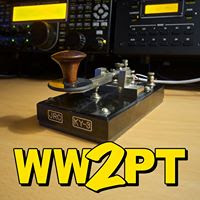The Unplanetization of Pluto
The vote is in, and I demand a recount:
Capping years of intense debate, astronomers resolved today to demote Pluto in a wholesale redefinition of planethood that is being billed as a victory of scientific reasoning over historic and cultural influences. But already the decision is being hotly debated.
Officially, Pluto is no longer a planet.
 I fart in their general direction.
I fart in their general direction.Here's my take on it: The IAU's resolution, voted on by a stark minority of professional astronomers, defines a planet as "a celestial body that (a) is in orbit around a star or stellar remnants; (b) has sufficient mass for its self-gravity to overcome rigid body forces so that it assumes a hydrostatic equilibrium (nearly round) shape; (c) is not massive enough to initiate thermonuclear fusion of deuterium in its core; and, (d) has cleared the neighborhood around its orbit." Pluto apparently meets the first three criteria, but not the fourth.
A faction of scientists have had a hard-on for Pluto since the day Clyde discovered it, and it seems they've finally gotten their cookie. While there are plenty of pro astronomers that do not agree with Pluto's demotion, it is largely the public and amateur astronomers who are most perturbed at this turn of events - not because the decision is necessarily wrong, but because it is unneccessary. The IAU could have expanded the definition to include Pluto, or made an exception to it on Pluto's behalf - a grandfather clause, if you will, or a Roger Maris-style asterisk. I honestly believe the reason they chose not to is as much a case of the "pros" thumbing their collective noses at the lowly masses as it is a matter of science. The new definition is completely arbitrary; it could easily, and just as arbitrarily, have been worded to remove Uranus from the list by simply adding , "(e) has an axial tilt of 45 degress or less." Apparently, the only reason the IAU would need to do that is "Just Because".
I freely admit that my reaction is mostly emotional. There may be plenty of valid scientific reasons for demoting Pluto. I simply don't care. Pluto has been a member of the planet club since 1930. This is, as stated in the above quote, a matter of culture and history, which (it may surprise the propeller-heads to learn) are just as important to mankind as science; it should have been left well enough alone. Instead, Pluto is now in a newly created class of Solar-orbiting objects called a dwarf planet. I'm confused already - if it's not a planet, why call it a dwarf planet? Either it's a planet, or it's not. The distinction reeks of Clintonesque word parsing ("It's not sex, it's oral sex!"). You'd figure that these geniuses would be clever enough to come up with a more distinctive name for their newly invented class. How about "Pla-not"?
David Levy makes a great point:
"The Earth has much more in common with Pluto than with, say, Jupiter," Levy said. "You can walk on Pluto, there are three moons in its sky. Land on Jupiter, you'd just fall right in. Jupiter and the Earth have almost nothing in common, yet they're both called planets without any debate."What he said. In this spirit I hereby propose that we further divide the remaining eight so-called "celestial bodies" that orbit our Sun into two groups: "Planets" (which would include Mercury, Venus, Earth and Mars) and "Big Balls of Gas" (Jupiter, Saturn, Uranus and Neptune). When do I get to vote?
- Pluto vote 'hijacked' in revolt (BBC)
- Goodbye, Pluto. Hello, "Dwarf Planets"! (S&T)
- Pluto Demoted: No Longer a Planet in Highly Controversial Definition (Space.com)
- IAU 2006 General Assembly: Result of the IAU Resolution votes
- Pluto (Wikipedia)
- Bush Kicks Pluto Out of Solar System (BlameBush!)
- The New York Times: Pluto Crisis Edition (The People's Cube)
- The Fight For Pluto Rages On (S&T)
- Astronomers Plot to Overturn Planet Definition (NewScientist)




















